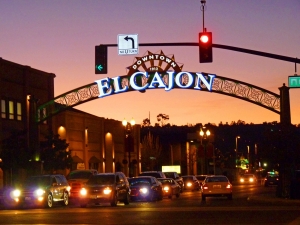 By Rami Ibrahim
By Rami Ibrahim
February 4, 2022 (El Cajon) -- The City of El Cajon is wrapping up its redistricting process to determine the boundaries of its Council districts for the next 10 years. But there is a catch. The City Council did not redistrict, and is instead on the precipice of adopting the exact map under which the current Council was elected. By ignoring state law and the voices of underrepresented communities who have been advocating for fair and representative districts, the City Council members revealed they had no intention to change the lines at all.
The El Cajon City Council claims that nothing has changed since the current map was drawn in 2017. Yet months of oral and written testimony from Arab, Middle Eastern, Muslim, and South Asian (AMEMSA) community members, leaders, and organizations in El Cajon demonstrate the city’s shifting demographics and growing refugee communities. Further, publicly submitted draft maps provided the Council with examples of the ways in which these communities wanted, and more importantly could, be mapped into a district that would comply with state and federal law and provide much needed representation to these historically marginalized communities. Faced with these proposals, however, Council members repeatedly expressed concern, and ultimately rejected, consideration of any map that would move them out of their current district and make them competitors for the same seat.
Unfortunately, the scenario unfolding in El Cajon is exactly what the Fair Maps Act, passed by the California Legislature in 2019, was intended to prevent: elected officials prioritizing their incumbency over the communities they represent. One of the most important aspects of the Fair Maps Act was the requirement that redistricting bodies center “communities of interest,” defined as a community which shares common social and economic interests that should be included within a single district for purposes of its effective and fair representation. Instead, by proceeding with its current map, the council is blatantly disregarding and splitting clearly defined communities of interest in favor of council members’ own political interests.
Arab and Afghan community members in El Cajon participated in each of the City’s four required redistricting hearings –– a huge accomplishment for a community that has recently resettled to the United States in the last decade and has been depoliticized due to government programs that function to surveil, intimidate, and criminalize our communities into silence. They consistently presented their community of interest to the city council, explaining they are mostly Arabic speakers, are employed in the service industry, are of a lower socioeconomic status, and are renters with large family sizes.
According to Yasmeen Obeid, Advocacy Fellow with the Majdal Center, a primary Arab community resource center in El Cajon and San Diego County, “We have attended all four public hearings, several City Council meetings, and engaged over 300 community members in the process of producing our draft map. Yet, the City Council decided not to take any of that into account.”
El Cajon in particular holds one of the largest new immigrant and refugee populations in a county that welcomes more refugees than any other California county. These growing communities are disproportionately impacted by housing insecurity, gentrification, criminalization, healthcare (in)access, and Islamophobia. These barriers are even starker in El Cajon, a city where one in four people experience poverty, and child poverty rates are the highest in the county at almost 30%. Thus, fair representation is more critical than ever, especially given this particular moment. Indeed, it is very likely that our region will experience among the largest resettlement of Afghan refugees in the state, many of whom are already resettling El Cajon. The refugee community in El Cajon therefore has a vested and critical interest in direct representation to remedy the harmful effects of community disinvestment.
Immigrants, refugees, and AMEMSA communities have been integral to the fabric of this country for generations, and especially in San Diego County. They have a stake in this redistricting process, which could dictate their access to resources for the next 10 years and provide an opportunity for them to lay the groundwork for change. By neglecting community input and moving forward with the 2017 map, the City Council is not only disregarding the criteria required by the Fair Maps Act, they’re preserving an outdated status quo that ignores the needs of its most marginalized residents. The El Cajon City Council still has plenty of time to comply with the law and adopt a map that does not split communities of interest. We are asking them to do what is right.
Ibrahim is a Palestinian-American born in San Diego. He has been following the El Cajon, County of San Diego, and State Redistricting processes for 8 months.
The opinions in this reader’s editorial reflect the views of the author and do not necessarily reflect the views of East County Magazine. To submit an editorial for consideration, contact editor@eastcountymagazine.org.













Comments
mayor well